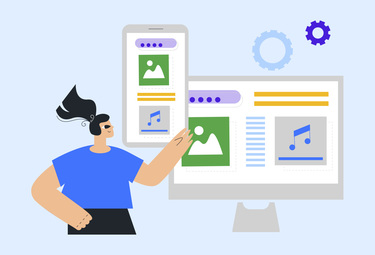

Year on year, globally, we can see a steady increase in mobile traffic to websites and its dominance over desktop (Allconnect, March 2024). More and more people are relying primarily on their smartphones and these are becoming the primary tool for using the internet. Changes in habits naturally affect the issue of technology standards. In order to meet users' expectations, many services are now being developed in such a way that they work like native apps. This type of approach is referred to as Progressive Web Apps.
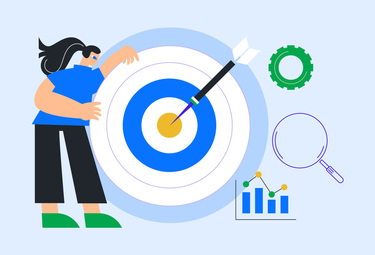

Today's consumers, operating in highly digitalised markets, have increasingly high expectations of brands – particularly in terms of the quality of communication related to the purchasing process. One of the most important elements of companies' business strategies is the management of the digital customer experience, which is why many new channels and tools for CX design have emerged. A flagship example of this is all kinds of DXP-type solutions, i.e. platforms with powerful analytical options that offer comprehensive instruments to increase efficiency in developing CX.
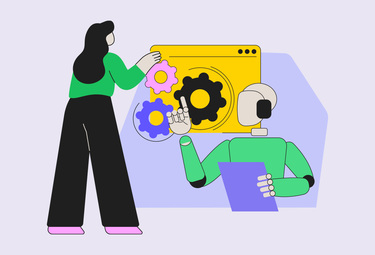

Efficiency and competitiveness are among the fundamental factors determining market success. Digital transformation continues to progress and is also reflected in the area of optimising business process management. Consequently, modern companies are increasingly turning to automation of various mechanisms in order to increase overall efficiency and reduce operating costs.
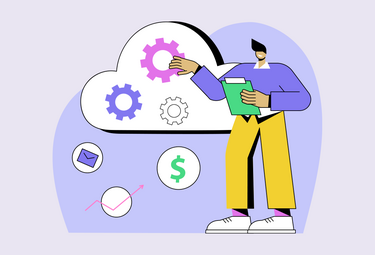

IT companies are increasingly opting to use cloud solutions because of the numerous advantages that these modern technologies bring. The flexibility and scalability of cloud models allows organisations to adapt IT resources to changing needs, eliminating the need to invest in costly in-house infrastructure. It is also an excellent tool to support remote collaboration, as it allows easy access to data and applications from any location or device.


Moving IT infrastructure to the cloud is not only a trend, but also a strategy that allows organisations to improve the efficiency, flexibility and scalability of their operations. Increasingly, migration is becoming a standard procedure and spending on cloud services in companies is increasing, but translating into overall savings after the transformation.


Choosing the right cloud service delivery model is very often crucial for business efficiency and scalability. With cloud technologies, companies gain access to multiple tools. They therefore do not need to invest in their own infrastructure to host or use specific applications, software or other platforms. The three most popular models, namely SaaS, PaaS and IaaS, offer varying levels of responsibility and control for customers. What they do have in common, however, is the way they operate, which is to make resources available only at the request of the service recipient. However, each responds to different needs, so before migrating to the cloud, it is worth carefully analysing their characteristics in order to choose the one that is truly appropriate for the projects under way.


The performance of marketing activities in various forms is a significant component of a company's marketing strategy. The effectiveness of these proceedings is influenced not only by the right concept, but also by well-set goals, ongoing analysis of activities and measurement of indicators. Due to constantly changing trends in the market, the strategy requires constant improvement. Monitoring marketing performance makes it possible to verify the actions taken and check whether all elements are functioning as intended. When evaluating their effectiveness, it is necessary to use appropriate tools to analyze specific indicators.


One of the most important parts of the digital product design process is user testing - it's an integral part of quality software development, so it shouldn't be overlooked. Such testing allows you to understand your audience to ensure that the final version of your website or app will fully meet their needs. Individuals' experiences may differ depending on their age or gender, so it is extremely important to create a universal product that suits multiple users.
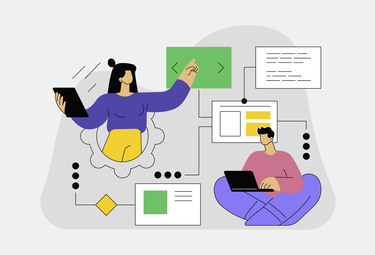

A web search engine, like a stray traveller, needs a map to find its way in an unknown place. In this case, of course, it is the website to be indexed. A site map is one tool that does not require a great deal of work to implement, yet is capable of delivering many benefits.
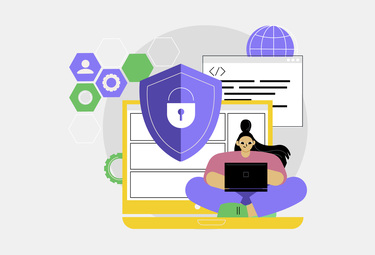

As IT solutions evolve, newer and newer cyber threats are constantly emerging, forcing developers to take special care with web application security. Protecting servers involves not only the use of appropriate encryption, authentication or regular updates, but also the use of various types of firewalls to make it difficult for hackers to tamper with the source code.
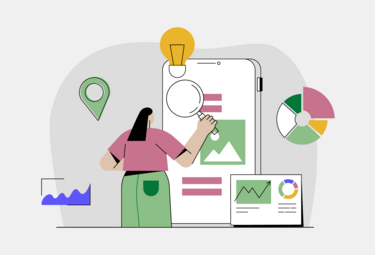

Digital products are intangible goods that only exist in digital form. This means that they have practically no physical form and are stored as files. Such goods or services are sold and made available online, with the intention of offering people some form of utility. The digital form of the product allows it to evolve and create personalised offers that can be tailored to users. Based on data showing what features they find valuable, it is possible to prepare updates that increase the usability of goods or services. Examples of digital products include website templates, social media platforms, e-books, search engines or audio files, but the list is definitely longer.


Technology is constantly and rapidly evolving, causing customers of various brands to expect increasingly personalized interactions. Customized communication and attention to detail have become important factors for a companies' competitiveness. Many of them are adapting to customer expectations by looking for solutions to create personalized experiences across multiple channels. For this reason, a key element of many business strategies is managing digital customer experiences (CX). They are all of the interactions that occur between them and the company, which cause them to have certain feelings about the brand. There are a number of channels and tools for designing and managing CX, but today we’re putting special attention to two concepts - CMS (Content Management System) and DXP (Digital Experience Platform). The former system is commonly used to manage content on websites. The latter, on the other hand, is an extension containing more powerful features and offering comprehensive tools to increase efficiency in developing CX.
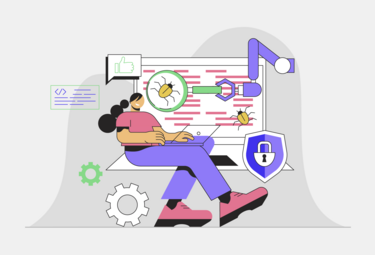

Testing is an extremely important part of the software development process that should not be overlooked, as it serves to ensure that the client receives the highest possible quality of the solutions delivered. At this stage, it is possible to verify that the resulting digital product meets all requirements and is actually fit for use. In the case of web applications, which are complex constructions consisting of many components, in-depth verification is a must. This avoids mistakes in the implementation of the project in the first place, as well as making sure that all functionalities will work as they should. There are two paths, the combination of which creates the most effective test suite.
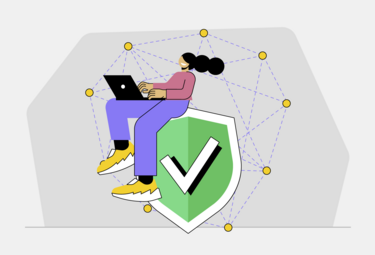

Increasing digitalisation is creating new opportunities for companies, but with these opportunities also come online security risks. Our work relies heavily on digital technologies, so cyber attacks can have very serious consequences, e.g. in terms of the legal consequences that can arise if sensitive data is leaked. In addition to this, the costs that usually need to be incurred to restore servers are also of considerable importance.
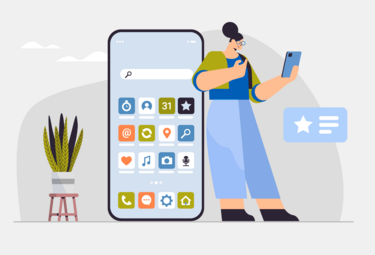

Ever-evolving technology and Fear of Missing Out (FOMO) have made the smartphone an indispensable tool that many people never leave home without. Thus, not only is the number of users of mobile devices increasing, but also the demand for applications that decisively expand their functionality. Smartphones are no longer only used for communication, but also for a multitude of other functions, which are used by users with the help of applications - nowadays, entertainment and social applications (such as Facebook or Instagram) predominate. There is huge competition in the mobile app market, with new apps appearing almost constantly, which is why it is so important to take care of their development and improve the practical aspects.
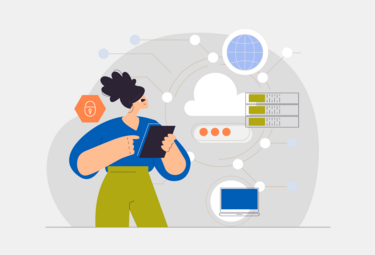

Today's technology is constantly evolving, which means that the IT infrastructure needs to be continually expanded so that the company can modernise its digital architecture. One of the most common ways to increase productivity and reduce operational costs is IT systems integration. This is the process of combining software and hardware modules into one cohesive infrastructure, enabling all elements to work as a whole - although the systems differ in application, they often use the same data. Unification is carried out when a company wants to merge disparate systems, e.g. to facilitate the exchange of data between them.
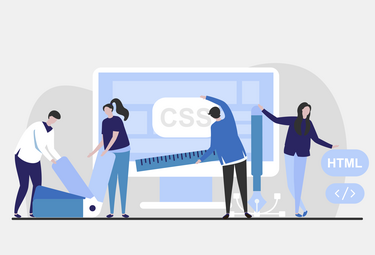

Websites generally consist of two parts: the frontend and the backend, and both terms are very commonly used in the IT industry. The frontend refers to the user interface, while the backend describes the server, application and database running in the background to provide the user with the information they require. Frontend developers work on what is visible when using the application, while backend developers build the infrastructure that supports the frontend. All these specialists are essential during the process of building modern web applications - by working together, highly functional and visually appealing systems can be created.
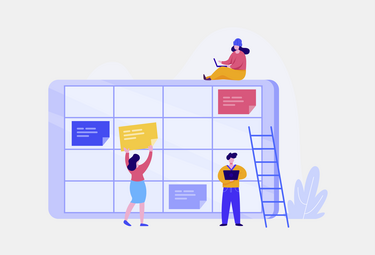

The development of dedicated IT solutions is a very complex process that requires appropriate work organisation. Problems usually arise when project requirements are not properly prioritised because then, none of them is more important than the others. Therefore, when preparing an action plan, it is important to prioritise the individual activities at an early stage.


Creating a product is a complex process that involves certain risks. A project idea alone, even aptly defined, does not guarantee success. It’s the execution aspect of the project that is crucial. It is important to focus on thoroughly understanding the client's expectations and analyzing his vision. Above all, it is necessary to verify the assumptions made by him, so as to be sure that the whole concept is based on reliable foundations - specific research and verified data.
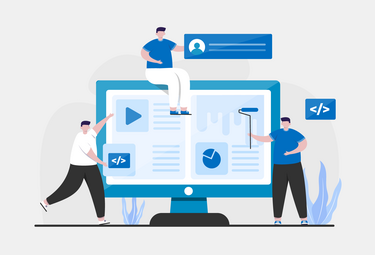

Gaining a competitive edge through software is now a development standard in almost every company. It is essential to integrate new digital technologies into various processes to meet the ever-changing needs of the market. Doing things faster and more efficiently reduces costs, which is a natural source of profit generation.


User Experience is one of the key elements whilst developing software and online applications. Adapting the product to the user's needs is an important activity to attract new customers and retain current ones. Thanks to the work of UX designers, a product can be crafted in such a way that it makes it easier for individual users, or even institutions, to function on a daily basis. Given a choice between a website or application adapted to their needs and a system that does not meet all requirements, users will opt for the more convenient option. The goal, therefore, when creating new products, is to understand these expectations and adapt them to previously outlined plans. This is what designing with a User Experience strategy helps with. It sets the main directions to be followed in the design process, so that the newly created website or application is user-friendly.


Year on year, globally, we can see a steady increase in mobile traffic to websites and its dominance over desktop (Allconnect, March 2024). More and more people are relying primarily on their smartphones and these are becoming the primary tool for using the internet. Changes in habits naturally affect the issue of technology standards. In order to meet users' expectations, many services are now being developed in such a way that they work like native apps. This type of approach is referred to as Progressive Web Apps.


Today's consumers, operating in highly digitalised markets, have increasingly high expectations of brands – particularly in terms of the quality of communication related to the purchasing process. One of the most important elements of companies' business strategies is the management of the digital customer experience, which is why many new channels and tools for CX design have emerged. A flagship example of this is all kinds of DXP-type solutions, i.e. platforms with powerful analytical options that offer comprehensive instruments to increase efficiency in developing CX.


Efficiency and competitiveness are among the fundamental factors determining market success. Digital transformation continues to progress and is also reflected in the area of optimising business process management. Consequently, modern companies are increasingly turning to automation of various mechanisms in order to increase overall efficiency and reduce operating costs.


IT companies are increasingly opting to use cloud solutions because of the numerous advantages that these modern technologies bring. The flexibility and scalability of cloud models allows organisations to adapt IT resources to changing needs, eliminating the need to invest in costly in-house infrastructure. It is also an excellent tool to support remote collaboration, as it allows easy access to data and applications from any location or device.


Moving IT infrastructure to the cloud is not only a trend, but also a strategy that allows organisations to improve the efficiency, flexibility and scalability of their operations. Increasingly, migration is becoming a standard procedure and spending on cloud services in companies is increasing, but translating into overall savings after the transformation.


Choosing the right cloud service delivery model is very often crucial for business efficiency and scalability. With cloud technologies, companies gain access to multiple tools. They therefore do not need to invest in their own infrastructure to host or use specific applications, software or other platforms. The three most popular models, namely SaaS, PaaS and IaaS, offer varying levels of responsibility and control for customers. What they do have in common, however, is the way they operate, which is to make resources available only at the request of the service recipient. However, each responds to different needs, so before migrating to the cloud, it is worth carefully analysing their characteristics in order to choose the one that is truly appropriate for the projects under way.


The performance of marketing activities in various forms is a significant component of a company's marketing strategy. The effectiveness of these proceedings is influenced not only by the right concept, but also by well-set goals, ongoing analysis of activities and measurement of indicators. Due to constantly changing trends in the market, the strategy requires constant improvement. Monitoring marketing performance makes it possible to verify the actions taken and check whether all elements are functioning as intended. When evaluating their effectiveness, it is necessary to use appropriate tools to analyze specific indicators.


One of the most important parts of the digital product design process is user testing - it's an integral part of quality software development, so it shouldn't be overlooked. Such testing allows you to understand your audience to ensure that the final version of your website or app will fully meet their needs. Individuals' experiences may differ depending on their age or gender, so it is extremely important to create a universal product that suits multiple users.


A web search engine, like a stray traveller, needs a map to find its way in an unknown place. In this case, of course, it is the website to be indexed. A site map is one tool that does not require a great deal of work to implement, yet is capable of delivering many benefits.


As IT solutions evolve, newer and newer cyber threats are constantly emerging, forcing developers to take special care with web application security. Protecting servers involves not only the use of appropriate encryption, authentication or regular updates, but also the use of various types of firewalls to make it difficult for hackers to tamper with the source code.


Digital products are intangible goods that only exist in digital form. This means that they have practically no physical form and are stored as files. Such goods or services are sold and made available online, with the intention of offering people some form of utility. The digital form of the product allows it to evolve and create personalised offers that can be tailored to users. Based on data showing what features they find valuable, it is possible to prepare updates that increase the usability of goods or services. Examples of digital products include website templates, social media platforms, e-books, search engines or audio files, but the list is definitely longer.


Technology is constantly and rapidly evolving, causing customers of various brands to expect increasingly personalized interactions. Customized communication and attention to detail have become important factors for a companies' competitiveness. Many of them are adapting to customer expectations by looking for solutions to create personalized experiences across multiple channels. For this reason, a key element of many business strategies is managing digital customer experiences (CX). They are all of the interactions that occur between them and the company, which cause them to have certain feelings about the brand. There are a number of channels and tools for designing and managing CX, but today we’re putting special attention to two concepts - CMS (Content Management System) and DXP (Digital Experience Platform). The former system is commonly used to manage content on websites. The latter, on the other hand, is an extension containing more powerful features and offering comprehensive tools to increase efficiency in developing CX.


Testing is an extremely important part of the software development process that should not be overlooked, as it serves to ensure that the client receives the highest possible quality of the solutions delivered. At this stage, it is possible to verify that the resulting digital product meets all requirements and is actually fit for use. In the case of web applications, which are complex constructions consisting of many components, in-depth verification is a must. This avoids mistakes in the implementation of the project in the first place, as well as making sure that all functionalities will work as they should. There are two paths, the combination of which creates the most effective test suite.


Increasing digitalisation is creating new opportunities for companies, but with these opportunities also come online security risks. Our work relies heavily on digital technologies, so cyber attacks can have very serious consequences, e.g. in terms of the legal consequences that can arise if sensitive data is leaked. In addition to this, the costs that usually need to be incurred to restore servers are also of considerable importance.


Ever-evolving technology and Fear of Missing Out (FOMO) have made the smartphone an indispensable tool that many people never leave home without. Thus, not only is the number of users of mobile devices increasing, but also the demand for applications that decisively expand their functionality. Smartphones are no longer only used for communication, but also for a multitude of other functions, which are used by users with the help of applications - nowadays, entertainment and social applications (such as Facebook or Instagram) predominate. There is huge competition in the mobile app market, with new apps appearing almost constantly, which is why it is so important to take care of their development and improve the practical aspects.


Today's technology is constantly evolving, which means that the IT infrastructure needs to be continually expanded so that the company can modernise its digital architecture. One of the most common ways to increase productivity and reduce operational costs is IT systems integration. This is the process of combining software and hardware modules into one cohesive infrastructure, enabling all elements to work as a whole - although the systems differ in application, they often use the same data. Unification is carried out when a company wants to merge disparate systems, e.g. to facilitate the exchange of data between them.


Websites generally consist of two parts: the frontend and the backend, and both terms are very commonly used in the IT industry. The frontend refers to the user interface, while the backend describes the server, application and database running in the background to provide the user with the information they require. Frontend developers work on what is visible when using the application, while backend developers build the infrastructure that supports the frontend. All these specialists are essential during the process of building modern web applications - by working together, highly functional and visually appealing systems can be created.


The development of dedicated IT solutions is a very complex process that requires appropriate work organisation. Problems usually arise when project requirements are not properly prioritised because then, none of them is more important than the others. Therefore, when preparing an action plan, it is important to prioritise the individual activities at an early stage.


Creating a product is a complex process that involves certain risks. A project idea alone, even aptly defined, does not guarantee success. It’s the execution aspect of the project that is crucial. It is important to focus on thoroughly understanding the client's expectations and analyzing his vision. Above all, it is necessary to verify the assumptions made by him, so as to be sure that the whole concept is based on reliable foundations - specific research and verified data.


Gaining a competitive edge through software is now a development standard in almost every company. It is essential to integrate new digital technologies into various processes to meet the ever-changing needs of the market. Doing things faster and more efficiently reduces costs, which is a natural source of profit generation.


User Experience is one of the key elements whilst developing software and online applications. Adapting the product to the user's needs is an important activity to attract new customers and retain current ones. Thanks to the work of UX designers, a product can be crafted in such a way that it makes it easier for individual users, or even institutions, to function on a daily basis. Given a choice between a website or application adapted to their needs and a system that does not meet all requirements, users will opt for the more convenient option. The goal, therefore, when creating new products, is to understand these expectations and adapt them to previously outlined plans. This is what designing with a User Experience strategy helps with. It sets the main directions to be followed in the design process, so that the newly created website or application is user-friendly.